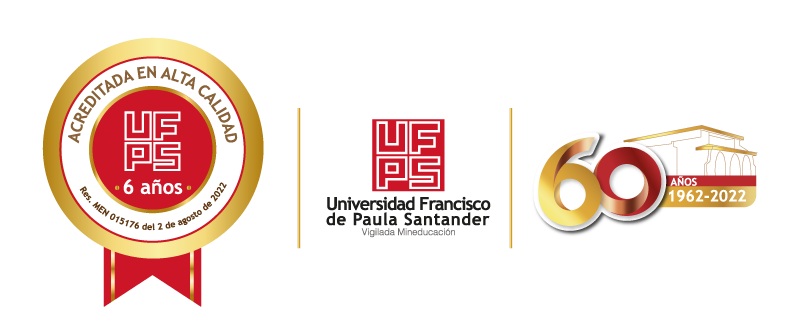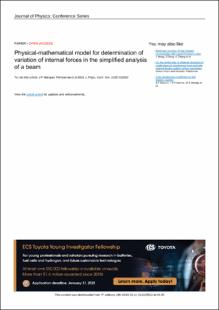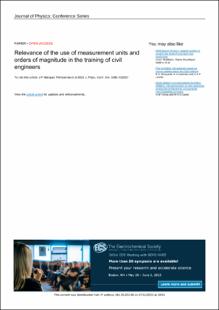Relevance of the use of measurement units and orders of magnitude in the training of civil engineers
...
Márquez Peñaranda, J F | 2021-05-22
Worldwide, a typical civil engineering program focuses in formal, natural, and applied
sciences within an environment of ethical and social responsibility. Mathematics and computer
sciences are the main formal sciences. The most widely used natural sciences are physics, earth
science, and chemistry. On the other hand, a student who begins the professional cycle of the
program must develop skills in applied science to solve practical problems. Complex processes
and concepts requiring skills related to mathematics and physics must be developed. Such
processes and concepts demand an impeccable handling of operations which involve diverse
precision degrees, measurement units and a high variety of basic and derived quantities. This
work describes the identification and classification of the main errors made by students when
solving written exams applied in a natural environment of structural design courses. Data were
collected during four years at a university in Colombia. Report of errors was grouped into five
categories named modelling, quantities, regulation, signs, and others. Collected errors were
evaluated qualitatively and quantitatively. In addition, each error was assigned to a risk level
(high, intermediate, low) according to its potentiality to generate catastrophic errors in
professional practice. The quality and number of observed errors seem to be correlated with the
time of year in which they occur. On the other hand, the high-risk errors resulted to outweigh the
two lower risk levels. This finding is worrying and serves as the basis for making an urgent call
to review the way of teaching and its relationship with practical results. In synthesis, this study
presents a novel manner to study the formation errors in engineering civil programs. In the near
future, it is expected to use the results of this research to propose a procedure for the design and
feedback of teaching strategies consistent with the evaluation objectives of each course.
LEER











